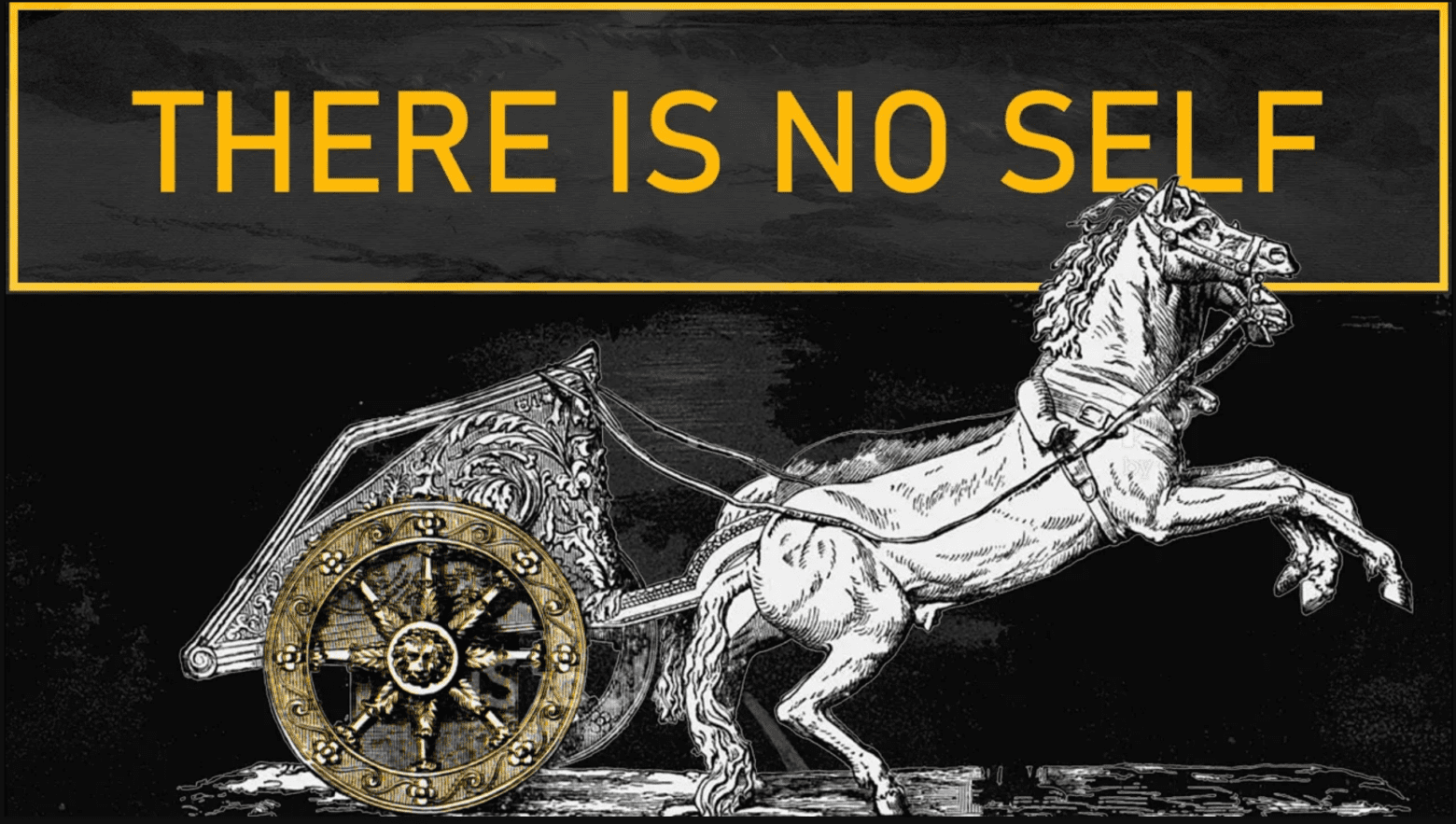Who are you?
Yes, I mean you who are reading this article.
Before you answer, let me tell you an old Buddhist story about the nature of what you call ‘I’. A story involving a monk, a king, and the famous chariot simile.
(You can watch the video version of this essay on YouTube.)
Milindapañha: The Questions of King Milinda
One day the monk Nāgasena visited Milinda, king of Sāgala, for a conversation.
As common courtesy requires, King Milinda asked the monk to introduce himself.
The monk answered ‘my parents have named me Nāgasena, o king, and that’s what my fellow monks call me. But this name is only a conventional term. There is really no person, no ‘self’ it points to.’
Now, the king was a worldly, educated man. He was immediately annoyed by this unnecessarily mystical answer. So, he decided to strike back. His follow-up question was so brilliant, I’ll quote it directly. The king said:
‘If, most reverend Nāgasena, there [are no real persons], pray, who gives to you members of the Order your robes and food and lodging and necessaries for the sick? Who is it who enjoys such things when given? Who is it who lives a life of righteousness? Who is it who devotes himself to meditation? Who is it who attains the goal of […] Nirvāṇa […]?
‘And who is it who kills living creatures? Who is it who takes what is not his own? Who is it who lives an evil life of worldly desires, who speaks lies, who drinks strong drink [?] If, most reverend Nāgasena, we are to think that were a man to kill you there would be no murder, then it follows that there are no real masters or teachers in your Order, and that your ordinations are meaningless.’
King Milinda was not pulling any punches. Not only did he attack the no-self teaching, but he was also suggesting the whole Buddhist project is hypocritical. And he was voicing a widespread criticism: that the Buddhist worldview is nihilistic and, ultimately, self-contradictory.
The King’s Chariot
To his credit, Nāgasena was not fazed by the king’s question. Rather calmly, he offered to answer by using an everyday example.
Now remember, during ancient times the rich didn’t drive around in Maserati’s – but they were no less fond of their chariots. So, Nāgasena decided to inquire about the king’s chariot, knowing it was probably a favorite subject.
He asked ‘Is it the pole that is your chariot, your Highness, or is the axle the chariot?’
‘Neither,’ the king said.
‘Is it the wheels, or the framework, or the ropes, or the yoke, or the spokes of the wheels, or the goad, are any of these your chariot?’
Again, Milinda answered in the negative.
‘But if we take all these separate parts and pile them up, would this be the chariot,’ Nāgasena asked.
‘No,’ the king said.
‘But is there anything outside of these parts that is your chariot?’
‘Of course not,’ said Milinda, ‘what is your point?’
‘Well,’ Nāgasena said, ‘it appears the chariot is nowhere to be found. Are we to conclude king Milinda lies about owning a chariot’?
At this point I imagine the king’s entourage were scandalized. A mere monk had the gall to suggest the king lies about his property… and to his face!
But King Milinda, being a cultivated man, was not offended, but actually entertained! Calmly, he answered: ‘I have spoken no lie, reverend Nāgasena. It is on account of its having these things—pole, axle, wheels, framework, ropes, yoke, spokes, and goad — that we use the conventional term ‘chariot’.’
Now Nāgasena had the king right where he wanted him.
The Chariot Simile
The monk said: ‘Excellent, Your Highness, truly you are a wise king. And now you can see how, in the same way, a ‘self’ is only a conventional term. On account of the many body parts, of feelings, perception, mental activity, and consciousness, on account of all these coming together in a specific way, that we say there is a ‘self’. But, really, there is no independent, persisting self outside these components or inside any of them.’
Upon hearing these words, the king bowed to the monk in front of the whole court.
Who Are You?
That’s how the story of the chariot simile goes. So let me return to my initial question.
Who is it that just read this article? Who is reading this sentence right now? If you examine your experience carefully right here and now, can you point to what you call ‘I’?
If you want to find out more about how the Buddha answered this question, check out our article on the Buddhs’ no-self teaching.



1 comment / Add your comment below